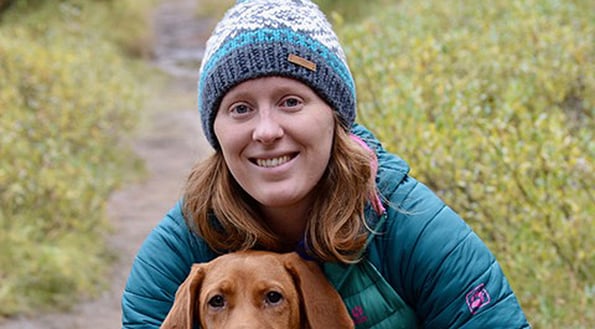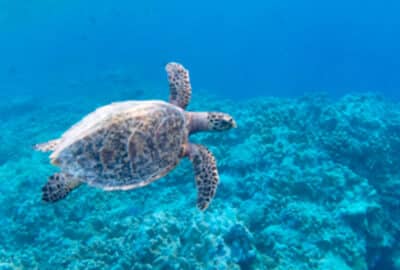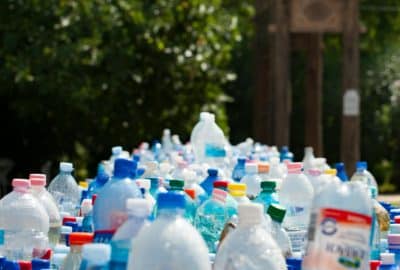Will climate change kill off the great tits?
Wednesday 28th Apr 2021, 1.35pm
Their distinctive ‘teacher teacher’ call is synonymous with British gardens, but great tits are facing a big problem – climate change. As our springtime becomes warmer and begins earlier, peak caterpillar abundance is also shifting earlier. As a crucial food source for great tit chicks, this is cause for concern. In this episode of the Big Questions Podcast, we catch up with ecologist Dr Charlotte Regan, one of the scientists who monitors the Wytham Woods great tit population, which has been systematically studied since the 1960s.
Emily Elias: Great tits are known for one big thing: their distinctive call. What did you think I was going to say? Their little ‘teacher-teacher’ chime is synonymous with British gardens, but, thanks to climate change, they are facing a big problem. On this episode of the Oxford Sparks Big Questions podcast, we are looking at these teeny, tiny, little birds and we’re asking: will climate change kill off the great tits?
Hello, I’m Emily Elias, and this is the show where we seek out the brightest minds at the University of Oxford and we ask them the big questions. On this episode, we are leaving the house. Yes, we are going into the wild, big, beautiful, open spaces of the Wytham Woods, to meet, at a social distance, a researcher with birds on the brain.
Charlotte Regan: I am Charlotte Regan, and currently we are sat in a gloriously sunny Wytham Woods. I’m a postdoctoral researcher at the University of Oxford, looking at the great tit population in these beautiful woods.
Emily: If you are unfamiliar with great tits, let’s just do a very quick introduction.
Charlotte: They are our largest tit species in the UK, and they’re about the same size as a robin. They weigh anywhere between around 16g and 22g, so they weigh a little bit less than double-A battery. They are yellow on their chest and belly. Then they have a greenish back, blue-grey wings, and then this very obvious black cap on their head. The males have a really big, thick, black stripe down their chest.
Emily: What do they sound like?
Charlotte: They do this very characteristic sound that you will have probably heard if you’ve been in any woodland. We describe it as being, sort of, like a ‘teacher-teacher’ song. That’s generally how we describe what their song sounds like.
Emily: Charlotte is lucky to have spent most of her lockdown in Wytham Woods, on the outskirts of Oxford. Now, her job is very complicated, but one key task is to walk around the woods and check on the birds.
Charlotte: We’ve been studying this population, actually, since the 1940s, but in a systematic way since 1961. In any spring breeding season, we have between 200 and 500 breeding pairs. One of the key parts of this population that we’re studying is their responses to the gradual changes in temperature we’re seeing with climate change.
Emily: How bad is climate change for these birds? Like, what’s happening to them?
Charlotte: The main thing that we see is, these birds, they really rely on a specific peak in caterpillar abundance to feed their chicks. As springs are warming and becoming earlier, these caterpillars are advancing when they emerge. So, to keep track of this, the birds are also having to advance when they’re laying their eggs, and, therefore, when their eggs are hatching and the chicks are needing maximum food. That’s the main change that we’re seeing and that we’re studying very closely.
Emily: So, just a small, little thing like an early spring is having a really big effect on these guys?
Charlotte: Yes, so, although to us it might seem every year we don’t really notice that much of a difference, but over the last 60 years we’ve seen a really dramatic change in temperature, and even in this study. So, we’ve seen the birds advancing their laying day by around two weeks over that time.
The problem is that, if they cannot keep up, their chicks, if they’re not provided with enough caterpillars, which are the main thing that the parents use to feed their chicks during that time, they just won’t survive to be adults.
Given that each adult, generally, on average, only survives two years, you can see that even one breeding season without having any chicks fledge from nests can really have a dramatic effect on that population size and how well it can cope over the next winter, next breeding season.
Emily: Does it just come down to temperatures? Are there other things that are making problems for the great tits?
Charlotte: One thing that we’re looking at, over and above the changes in average temperature that we’re seeing with climate change, is that we know that with climate change we’re also seeing increased variability. So, we’re seeing that consecutive years are actually more different now than they were in the beginning of this study, so back in the ‘60s.
We’re also seeing changes in the frequency of, like, super-hot days and super-cold days, which, over and above changes in average temperature, can have quite dramatic effects on species such as this, which don’t live very long and raise their offspring over a relatively short amount of time.
Emily: Charlotte and her team at the woods are tracking hundreds of birds. It’s the kind of territory where there are just too many to have adorable, cutesy, little names worked out for each one.
Charlotte: I’d say the main thing as you go round, you really notice the different personalities in the parents, for sure. Some of them, you visit the nest box and they either just sort of fly out while you do your things of weighing the eggs, but some are much more defensive. They will really try to scare you off their nests. That’s almost the ones that I remember; I know the boxes where the parent has a really bold personality. [Quiet: There are some down here that we can keep looking at].
Emily: On her regular trips, she has a little routine. She goes out and she finds these little, grey, concrete, tube-like boxes that all have numbers on them. They’re little birdhouses, and she slides them open and she takes a peek inside.
Charlotte: We had that really warm period in February, March, and we expected that we might have quite an early breeding season. Then everything cooled down, so we have birds at the moment making nests. So, a lot of our boxes now have early nests in. Then we have some that have just started laying.
Emily: When she takes the cover off, she can tell things like is there a nest inside? What is that nest made of? Are there any eggs? She takes all of this and she logs it in her notebook.
Charlotte: They generally lay one egg per day once they’ve started laying, but we do often see that, if there’s a very cold spell, they’ll just get laying on one day or two. So, the birds can make a few adjustments to try to change their luck in terms of the environment they can experience when they raise their chicks.
Emily: How many eggs will they lay in one season?
Charlotte: Yes, so, for our great tits, normally we see around 8 or 9 eggs laid, whereas blue tits lay a lot more, so sometimes we see 14 eggs in a blue tit nest.
Emily: What happens if we lose all our great tits?
Charlotte: I think the main thing for me is that, firstly, they’re a super-informative species. They’re one of the most well-studied birds in the world. They’ve provided so many useful insights into ecology and evolution that we would lose if we couldn’t study them anymore, but more than that, as well, is that I have a feeder in my garden. I enjoy watching them come to the feeders. They’re one of our most loved birds in the UK and in Europe, so that would be a real loss, I think. Even if you were to lose just one local population, that would be a real loss.
But also, losing them could have quite dramatic consequences for other species that live in the woodlands. We know that sparrowhawks here rely on great tit chicks to feed their offspring and to stay alive. So, you can imagine that there might be these ramifications through the food chain, onto other species that we also enjoy watching and we also enjoy studying, too.
Emily: Could they also just, I don’t know, take a chance and be like, “Hey, we’re leaving the UK, we’re going to go find somewhere else that has better caterpillars for us to eat when we want to eat them”?
Charlotte: Yes, so I think the main thing that I could see happening, as we see with many of these species, is that they would probably shift northwards, so to the extent that they can do so. Obviously, if you move north, temperatures are cooler. You stand a better chance of keeping track of these climate changes.
So, I think I could just imagine people noticing these obvious changes in the composition of different species and birds at their feeding stations and nesting in their nest boxes. I think, having had these birds around for so long, that would be a real shame.
Emily: Is there a risk that they could disappear?
Charlotte: I think there’s definitely a possibility that, if climate change continues, our springs continue to get warmer and continue to get earlier, the caterpillars are probably going to be better able to continue to advance. This could lead to the great tits, essentially, finding it impossible to keep track of this resource, which means they’re not going to have enough food for their chicks, which could eventually, if everything continues as we’re seeing at the moment, lead to particularly local extinctions of great tit populations, for sure.
Emily: You said that these birds live for an average of two years, so what’s the timeline on seeing them disappear? Are we actually talking about a few years?
Charlotte: In our population, it’s perhaps unlikely to happen over that short timescale, but I think, if everything continues as it does right now, perhaps in the next few decades we could start seeing more dramatic reductions in the output of parents in this population.
There are other populations which are already seeing much more of a mismatch than we are, and so they might see more dramatic changes before we do and act as a little bit of a warning system for us.
Emily: What can we do to help them?
Charlotte: There are many things we can do, like from larger-scale changes through to small ones. I would say the main thing, as we’re talking about the effects of climate change on the species, is maybe to also think about what we, as individuals, can do to try to reduce our impacts on carbon emissions. So, things like trying to walk and cycle where we can, use public transport, reducing meat and dairy consumption.
Also lobbying our governments and institutions just to make the bigger changes that we, as individuals, can’t, but even over and above that, there are things that we can do; for example, providing these birds food over the winter. They will use feeders readily. That may help them to maintain the condition they need to go into breeding in a position where they can modify their behaviour, as well as really visiting our woodlands and ensuring that they are kept for these populations in the long term.
Emily: The hope is that we will keep our great tits great. This podcast was brought to you by Oxford Sparks from the University of Oxford, with music by John Lyons and a special thanks to our guide, Dr Charlotte Regan.
Rate and review this podcast, or, better yet, just go tell a friend. Yes, we’ll settle for telling a friend. We like that sort of thing. You can find us on the Internet. We are ‘@OxfordSparks’ and we’ve got a neato website. Kids still say, “Neato,” right? Okay, it’s ‘oxfordsparks.ox.ac.uk’. I’m Emily Elias. Bye for now.





